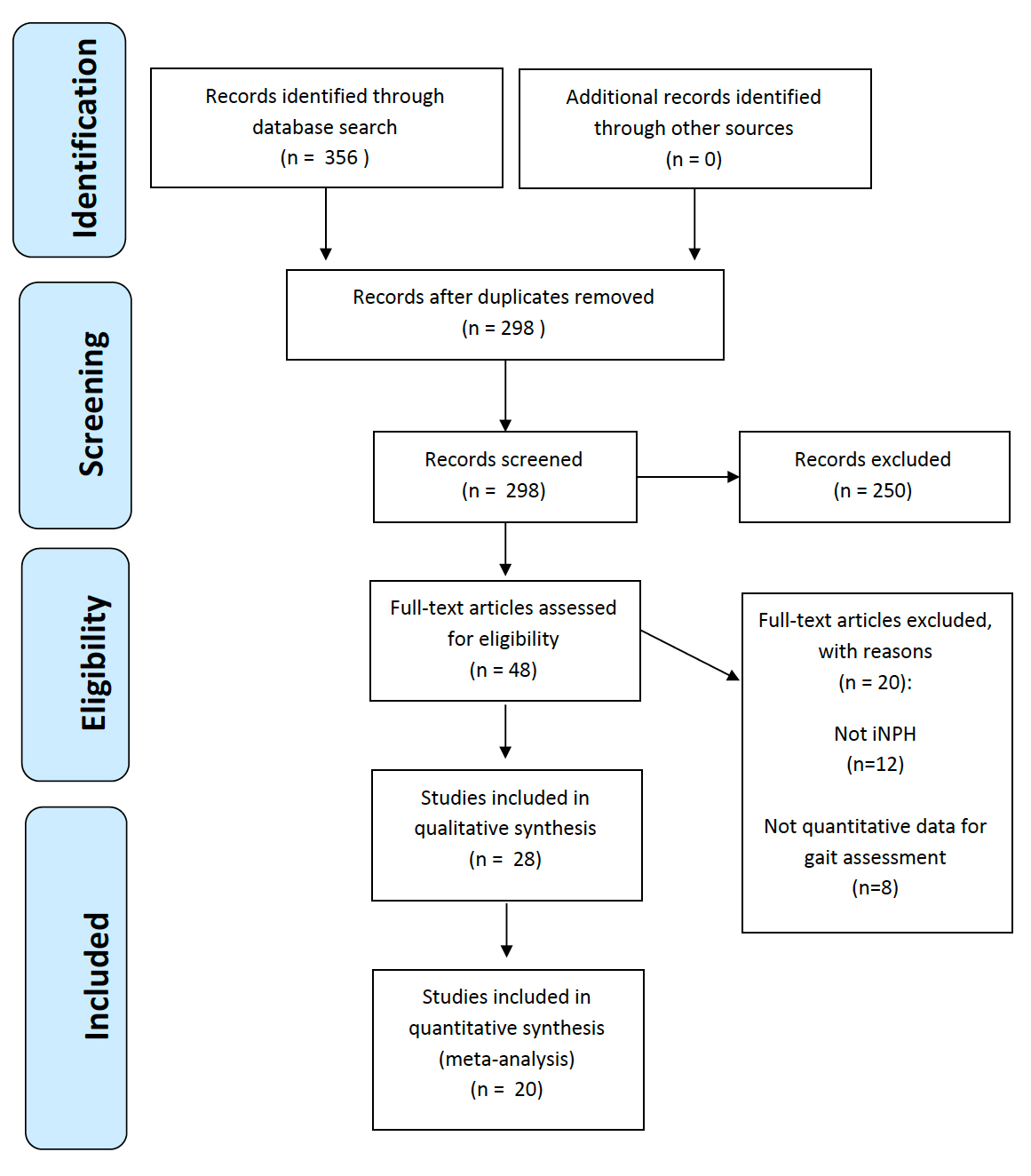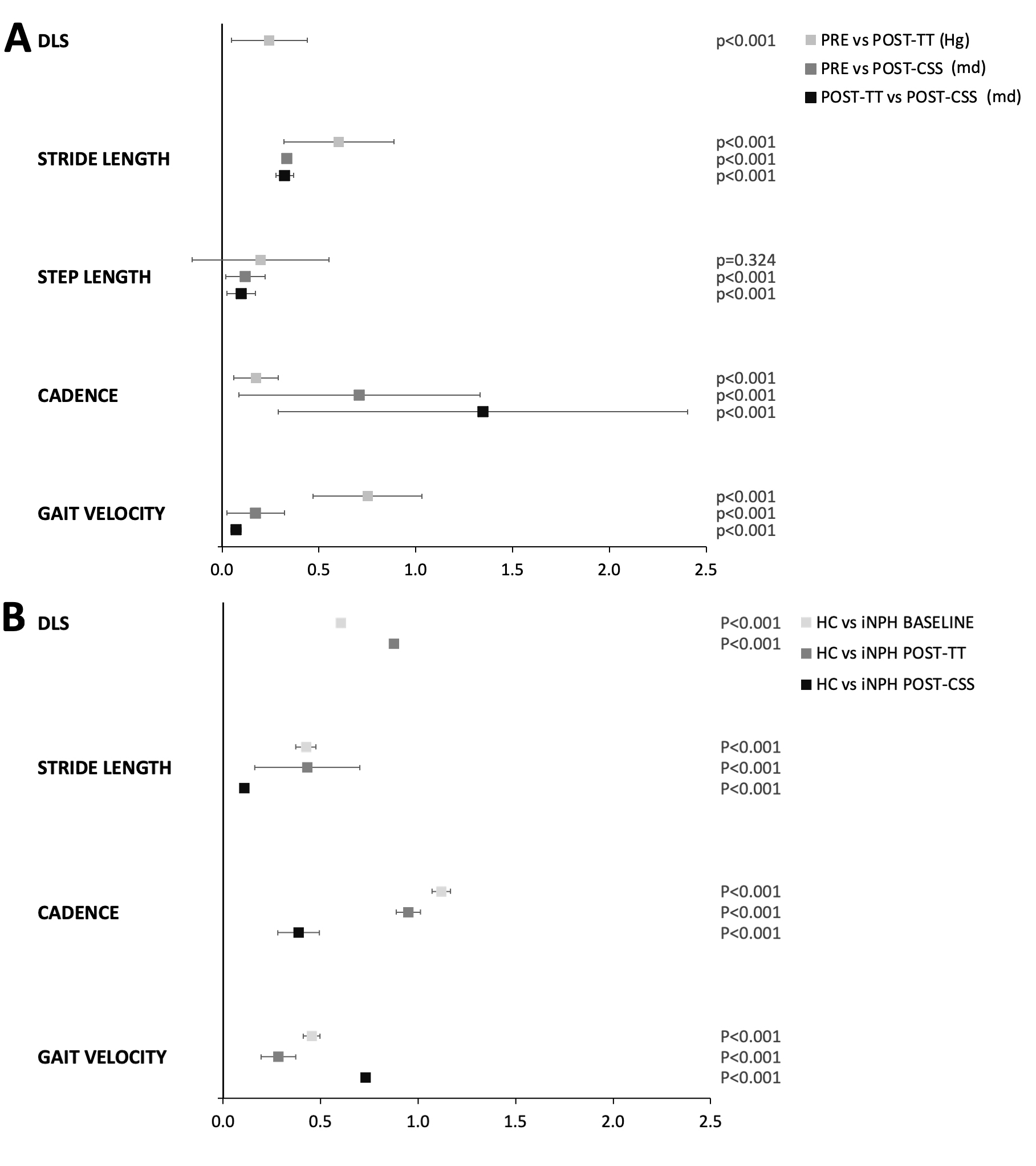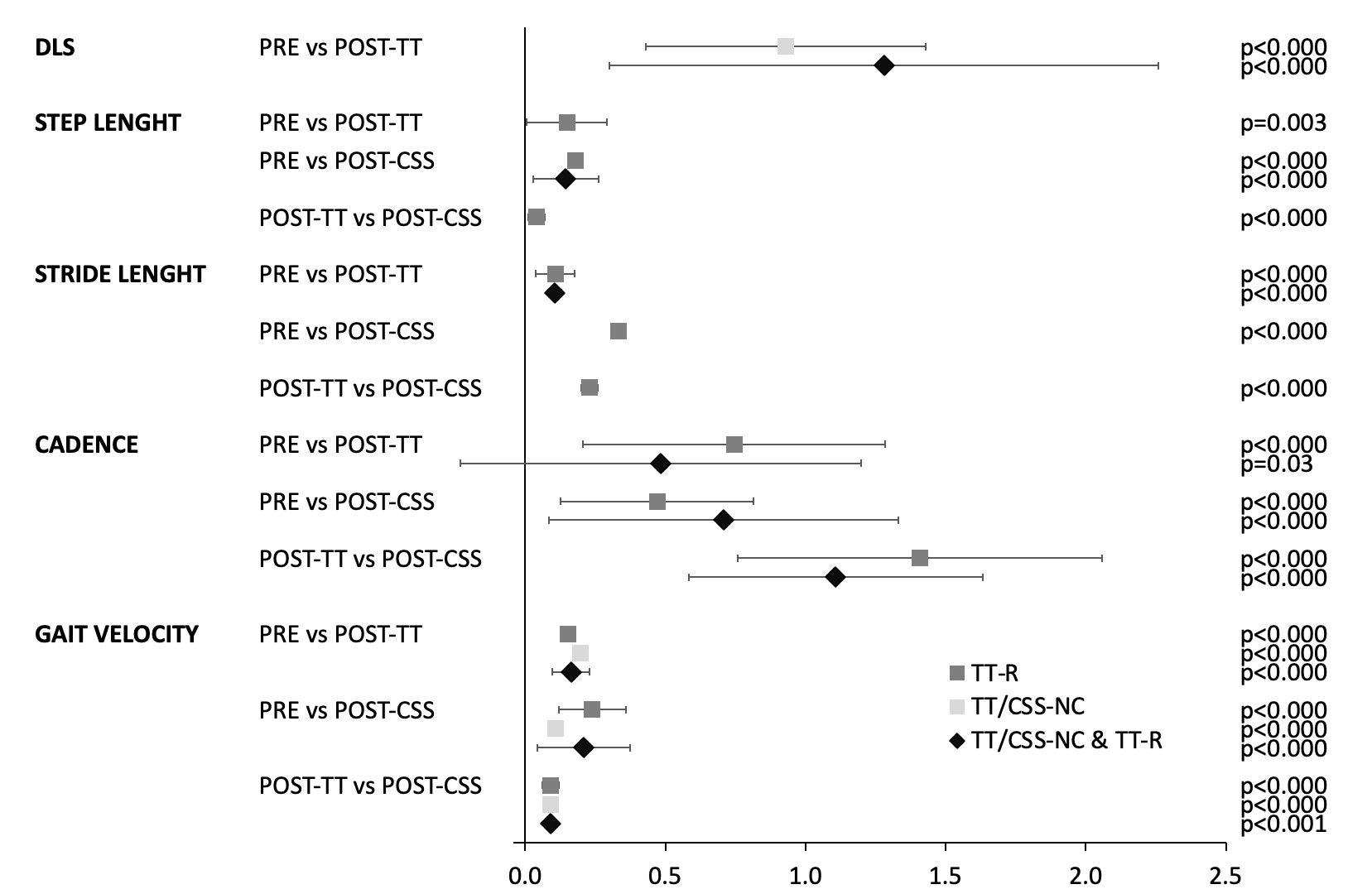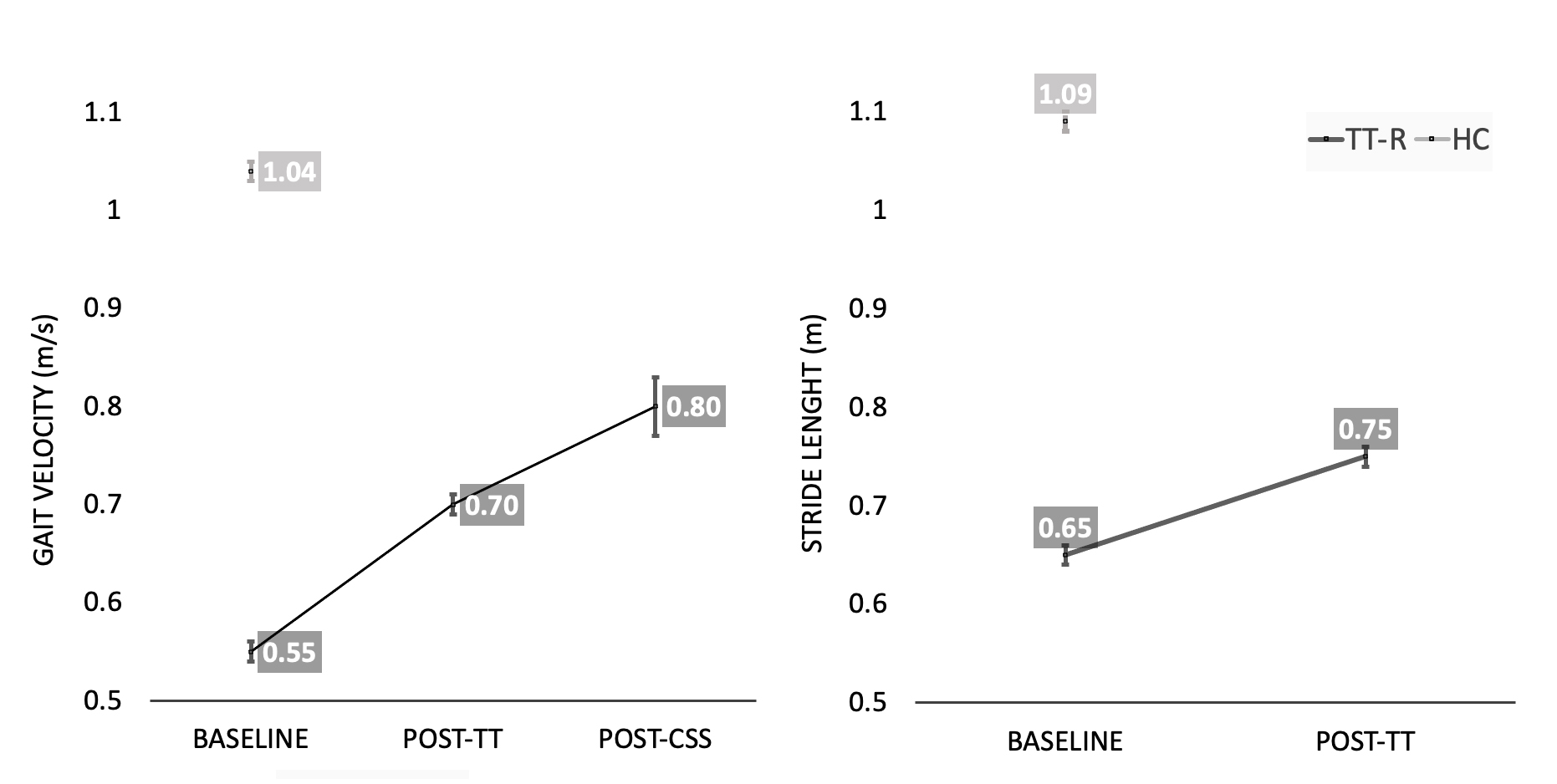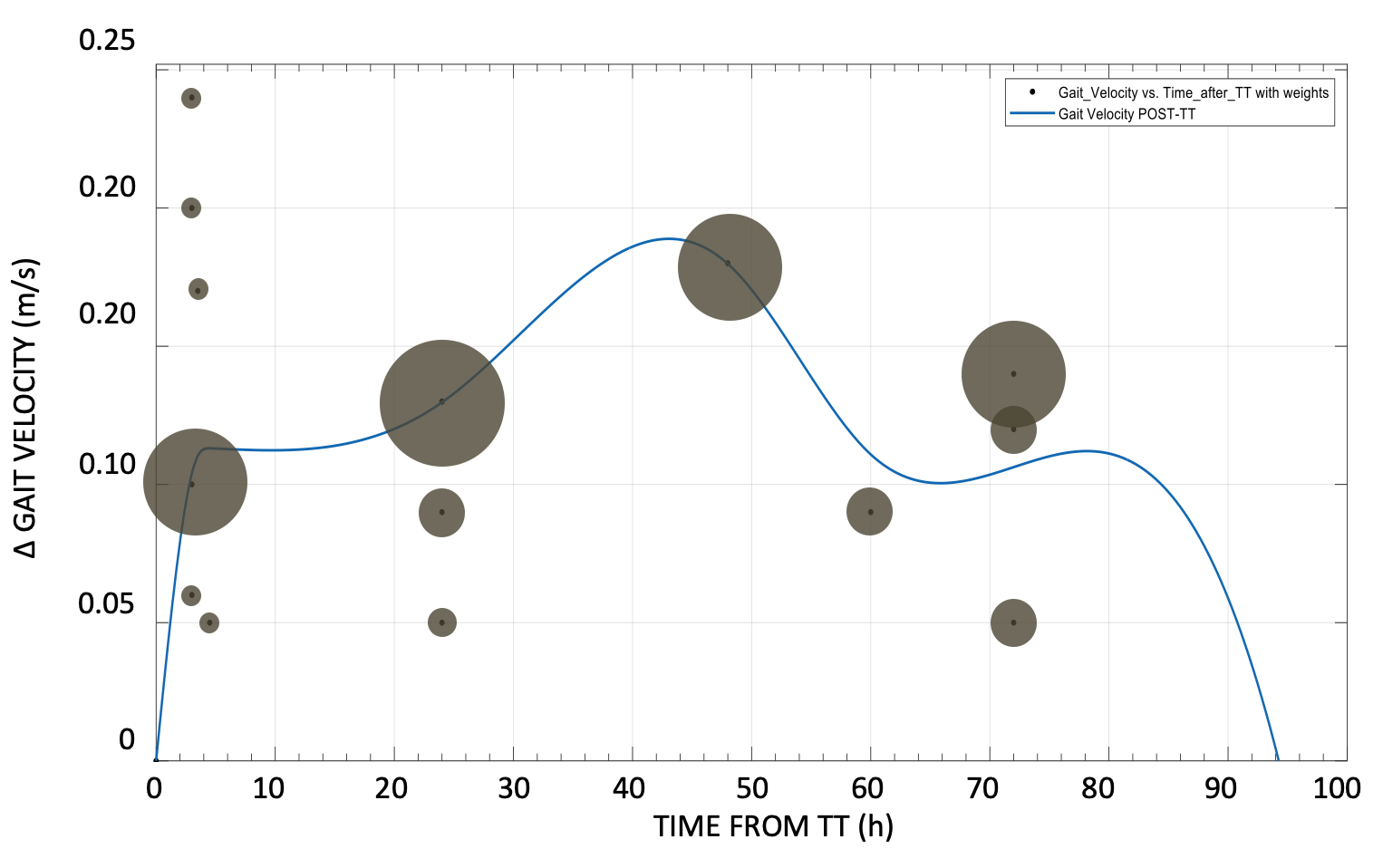Category: Parkinsonism, Others
Objective: This meta-analysis summarizes quantitative gait data in iNPH, and gait parameters improving after tap-test (TT)/CSF shunt surgery (CSS) to differentiate responders (R) from non-responders (NR).
Background: Gait analysis objectively quantifies gait impairment in idiopathic normal pressure hydrocephalus (iNPH), and may improve diagnosis and evaluation for surgical candidacy.
Method: Studies enrolling iNPH patients with at least one instrumented gait measure were selected. Three time points of gait assessment were defined: PRE, POST-TT, and POST-CSS. Gait velocity, cadence, step length, stride length, and double limb support time (DLS) were evaluated. Patients were categorized based on responsiveness to CSF removal as TT-R, CSS-R and TT-NR and CCS-NR.
Results: Twenty studies met the inclusion criteria (563 patients) [figure1]. Gait velocity was the most representative outcome. Several gait parameters consistently discriminated iNPH patients from HC, and in spite of the aforementioned improvements, patients’ gait never normalized. iNPH patients improved POST-TT in gait velocity (Hg: 0.751, p<0.001), cadence (Hg: 1.224, p<0.001), stride length (Hg: 0.603 p<0.001), DLS (Hg: 0.243 p<0.0001), and POST-CSS in gait velocity (dm: 0.173 m/s, p<0.001), cadence (dm 7.08 steps/min, p<0.001), step length (dm: 0.120 m, p<0.003), stride length (dm: 0.333 m, p<0.001) [figure2]. A significant difference could be appreciated between TT and CSS, in all meta-analyzable outcomes. TT-R improved significantly POST-TT and POST-CSS in each meta-analyzable outcome [figure3]. A gait velocity of 0.55±0.01 m/s (109 patients) with an improvement of 0.16±0.01 m/s after TT (120 patients) seems to be characteristic of these patients [figure4]. Meta-regression analysis revealed that TT effect on gait velocity plateaus after 24 h and returns to baseline in 100-120h [figure5].
Conclusion: Existing studies provide evidence that gait analysis is a reliable, quantitative instrument to assess gait impairment in iNPH patients. It objectively differentiates iNPH from HC, even after CSF removal, in keeping with the notion that the CSF dynamic alteration typical of iNPH also leads to an irreversible damage. Specific gait parameters improve among TT-R, providing an opportunity to select patients that will respond to CSS.
Future studies should identify and follow a standardized reporting method including criteria of responsiveness, specific gait parameters and timeframe of assessment.
To cite this abstract in AMA style:
M. Passaretti, A. Maranzano, B. Bluett, A. Fasano. Gait Analysis in Normal Pressure Hydrocephalus: a Meta-Analysis [abstract]. Mov Disord. 2022; 37 (suppl 2). https://www.mdsabstracts.org/abstract/gait-analysis-in-normal-pressure-hydrocephalus-a-meta-analysis/. Accessed December 26, 2025.« Back to 2022 International Congress
MDS Abstracts - https://www.mdsabstracts.org/abstract/gait-analysis-in-normal-pressure-hydrocephalus-a-meta-analysis/

